
A mainframe computer, informally called a mainframe or big iron, is a computer used primarily by large organizations for critical applications like bulk data processing for tasks such as censuses, industry and consumer statistics, enterprise resource planning, and large-scale transaction processing. A mainframe computer is large but not as large as a supercomputer and has more processing power than some other classes of computers, such as minicomputers, servers, workstations, and personal computers. Most large-scale computer-system architectures were established in the 1960s, but they continue to evolve. Mainframe computers are often used as servers.
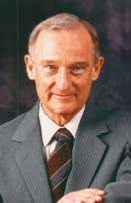
Seymour Roger Cray was an American electrical engineer and supercomputer architect who designed a series of computers that were the fastest in the world for decades, and founded Cray Research, which built many of these machines. Called "the father of supercomputing", Cray has been credited with creating the supercomputer industry. Joel S. Birnbaum, then chief technology officer of Hewlett-Packard, said of him: "It seems impossible to exaggerate the effect he had on the industry; many of the things that high performance computers now do routinely were at the farthest edge of credibility when Seymour envisioned them." Larry Smarr, then director of the National Center for Supercomputing Applications at the University of Illinois said that Cray is "the Thomas Edison of the supercomputing industry."
Control Data Corporation (CDC) was a mainframe and supercomputer company that in the 1960s was one of the nine major U.S. computer companies, which group included IBM, the Burroughs Corporation, and the Digital Equipment Corporation (DEC), the NCR Corporation (NCR), General Electric, and Honeywell, RCA and UNIVAC. For most of the 1960s, the strength of CDC was the work of the electrical engineer Seymour Cray who developed a series of fast computers, then considered the fastest computing machines in the world; in the 1970s, Cray left the Control Data Corporation and founded Cray Research (CRI) to design and make supercomputers. In 1988, after much financial loss, the Control Data Corporation began withdrawing from making computers and sold the affiliated companies of CDC; in 1992, Cray established Control Data Systems, Inc. The remaining affiliate companies of CDC currently do business as the software company Dayforce.
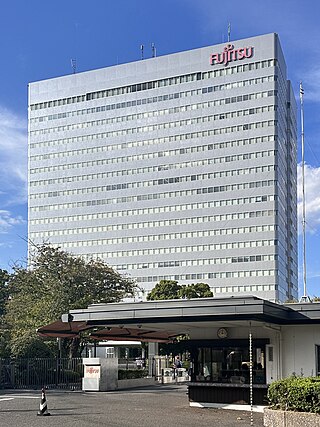
Fujitsu Limited is a Japanese multinational information and communications technology equipment and services corporation, established in 1935 and headquartered in Kawasaki, Kanagawa. It is the world's sixth-largest IT services provider by annual revenue, and the largest in Japan, as of 2021.

Toshiba Corporation is a Japanese multinational electronics company headquartered in Minato, Tokyo. Its diversified products and services include power, industrial and social infrastructure systems, elevators and escalators, electronic components, semiconductors, hard disk drives, printers, batteries, lighting, as well as IT solutions such as quantum cryptography. It was formerly also one of the biggest manufacturers of personal computers, consumer electronics, home appliances, and medical equipment.
Floating point operations per second is a measure of computer performance in computing, useful in fields of scientific computations that require floating-point calculations.
Cray Inc., a subsidiary of Hewlett Packard Enterprise, is an American supercomputer manufacturer headquartered in Seattle, Washington. It also manufactures systems for data storage and analytics. Several Cray supercomputer systems are listed in the TOP500, which ranks the most powerful supercomputers in the world.

Honeywell International Inc. is an American publicly traded, multinational conglomerate corporation headquartered in Charlotte, North Carolina. It primarily operates in four areas of business: aerospace, building automation, industrial automation, and energy and sustainability solutions (ESS). Honeywell is a Fortune 500 company, ranked 115th in 2023. In 2023, the corporation had a global workforce of approximately 95,000 employees. As of 2020, the current chairman & chief executive officer (CEO) is Vimal Kapur.

The ETA10 is a vector supercomputer designed, manufactured, and marketed by ETA Systems, a spin-off division of Control Data Corporation (CDC). The ETA10 was an evolution of the CDC Cyber 205, which can trace its origins back to the CDC STAR-100, one of the first vector supercomputers to be developed.

NEC Corporation is a Japanese multinational information technology and electronics corporation, headquartered at the NEC Supertower in Minato, Tokyo, Japan. It provides IT and network solutions, including cloud computing, artificial intelligence (AI), Internet of Things (IoT) platform, and telecommunications equipment and software to business enterprises, communications services providers and to government agencies. NEC has also been the largest PC vendor in Japan since the 1980s when it launched the PC-8000 series; it currently operates its domestic PC business in a joint venture with Lenovo.

Amdahl Corporation was an information technology company which specialized in IBM mainframe-compatible computer products, some of which were regarded as supercomputers competing with those from Cray Research. Founded in 1970 by Gene Amdahl, a former IBM computer engineer best known as chief architect of System/360, it has been a wholly owned subsidiary of Fujitsu since 1997. The company was located in Sunnyvale, California.
Minisupercomputers constituted a short-lived class of computers that emerged in the mid-1980s, characterized by the combination of vector processing and small-scale multiprocessing. As scientific computing using vector processors became more popular, the need for lower-cost systems that might be used at the departmental level instead of the corporate level created an opportunity for new computer vendors to enter the market. As a generalization, the price targets for these smaller computers were one-tenth of the larger supercomputers.
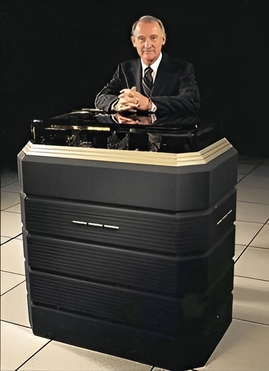
The Cray-3 was a vector supercomputer, Seymour Cray's designated successor to the Cray-2. The system was one of the first major applications of gallium arsenide (GaAs) semiconductors in computing, using hundreds of custom built ICs packed into a 1 cubic foot (0.028 m3) CPU. The design goal was performance around 16 GFLOPS, about 12 times that of the Cray-2.
The BUNCH was the nickname for the group of mainframe computer competitors of IBM in the 1970s. The name is derived from the names of the five companies: Burroughs, UNIVAC, NCR, Control Data Corporation (CDC), and Honeywell. These companies were grouped together because the market share of IBM was much higher than all of its competitors put together.
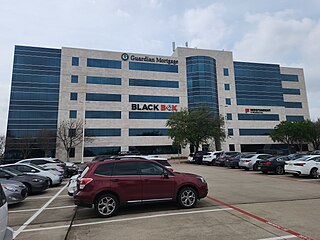
Black Box Corporation is an IT company headquartered in Texas, United States. The company provides technology assistance and consulting services to businesses in a variety of sectors including retail, transportation, government, education, and public safety. Black Box operates in 75 locations across 35 countries. In 2022, Black Box had more than 3,800 employees worldwide.

Exascale computing refers to computing systems capable of calculating at least 1018 IEEE 754 Double Precision (64-bit) operations (multiplications and/or additions) per second (exaFLOPS)"; it is a measure of supercomputer performance.
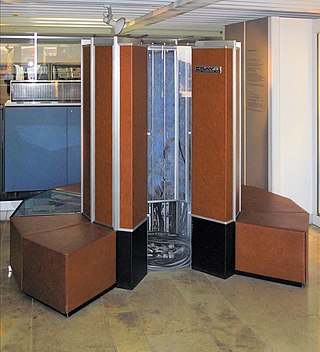
The history of supercomputing goes back to the 1960s when a series of computers at Control Data Corporation (CDC) were designed by Seymour Cray to use innovative designs and parallelism to achieve superior computational peak performance. The CDC 6600, released in 1964, is generally considered the first supercomputer. However, some earlier computers were considered supercomputers for their day such as the 1954 IBM NORC in the 1950s, and in the early 1960s, the UNIVAC LARC (1960), the IBM 7030 Stretch (1962), and the Manchester Atlas (1962), all of which were of comparable power.
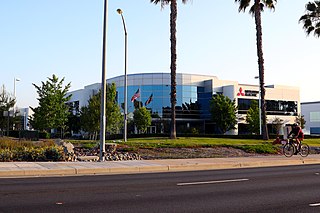
Mitsubishi Electric United States, Inc. is the principal subsidiary of Mitsubishi Electric Corporation in the United States. It is headquartered in Cypress, California and was incorporated in 2002 and its affiliates, have roughly 31 locations throughout North America with approximately 5,000 employees. Its main affiliate companies are: Mitsubishi Electric Power Products, Inc.; Mitsubishi Electric US, Inc.; Mitsubishi Electric Automotive America, Inc.; Mitsubishi Electric Automation, Inc.; and Mitsubishi Electric Research Laboratories, Inc.

Appro was a developer of supercomputing supporting High Performance Computing (HPC) markets focused on medium- to large-scale deployments. Appro was based in Milpitas, California with a computing center in Houston, Texas, and a manufacturing and support subsidiary in South Korea and Japan.
Ronald F. Borelli was an American Engineer, Inventor and Executive born in New Haven, Connecticut.













